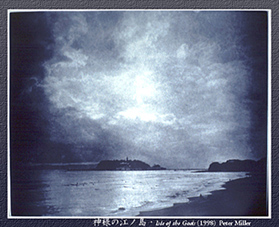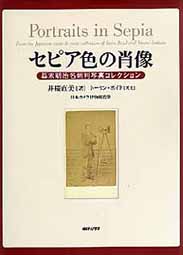
Home > TIPS Report > TIPS 2000 Index | About TIPS 2000 | TIPS 2000 Artists | TIPS FAQ
|
TIPS 2000 Artists
|
|
Peter Miller
|
Photogravure
 |
 |

|
TIPS 2000 Artists
|
|
Peter Miller
|
Photogravure
 |
 |
Photogravure etching, the European printmaking medium which Peter has chosen to express his personal vision of Japan, was invented in the early 19th century. The technique combines the focus, comprehensive detail and sometimes playful spontaneity of photography with the depth, tonal nuance and subtly tactile quality of etching. The ancient city of Kamakura, with its temples, gardens, and seascapes provides the material for much of Peter's art. Historically, Kamakura is associated with the emergence of Zen, an approach to enlightenment through constant awareness of the changing present moment, a set of practices which can be related to the art and craft of printmaking. Distilled and transformed by the subtle chemistry of his chosen medium, each image, minuscule or monumental, becomes in Peter's hands a statement of his pleasure in ordinary objects and surroundings.
Since 1995, Peter has held ten one-man exhibitions in Tokyo, Kamakura, Yokohama, Osaka, Washington DC, Pittsburgh, Seattle, Cologne, and most recently London. Prints of his have been acquired for the permanent collections of Cleveland Museum of Art, National Museum of American Art, Bibliotheque Nationale de France, Kamakura Museum of Modern Art, and the Sackler Gallery of the Smithsonian. He will be showing slides, photogravure prints, and sample copper plates.
Invented in 1873, the platinum print is made with paper coated with light-sensitive platinum salts instead of the silver halide found on most photo papers today. It's a "hands-on process" where Lawrence selects high quality papers (including Washi), mixes the chemicals, hand coats the paper, places a large-format, black-and-white negative on the coated paper, and exposes it with UV light. Palladium salts can also be used instead of platinum salts. The advantages of platinum-palladium prints include archival permanence and a greater tonal range than a silver-halide print. The color of the platinum-palladium image can range from blue-black to neutral greys and sepia browns, depending on the developers and papers used.
The resulting prints are deeply impressive, as you will see from the slides and actual prints Lawrence will show. His subjects include still lifes, nudes, portraits, and landscapes. Originally from Athens, Georgia, Lawrence has had solo exhibitions in Tokyo, Chiba, Kyoto, Germany, and the US. In 1996, Korinsha published a photo book of his prints titled Still. He also conducts platinum printmaking workshops at his studio in Kamogawa, Chiba.
See 200 of his images and a detailed biography at his Web site.
See more of his photos at: http://www.platinum-prints.com/
e-mail Lawrence at: platinum@olive.ocn.ne.jp
|
Naomi Izakura
|
Vintage Japanese Photographs
 |
 |
Photography began to spread in Japan from 1859 when Westerners were permitted to settle in the treaty ports of Yokohama, Nagasaki, and Hakodate. These cities became the cradles of early Japanese photography where Western photographers opened portrait studios and took pictures of Meiji Japan. Mt. Fuji, cherry blossoms, geisha, samurai, temples and shrines, etc., soon became the stereotypical images of Japan as foreign tourists bought the photographs and took them home as souvenirs. Many of the photographs were also hand-colored, making the pictures look even more charming. Today, these vintage photos can be quite valuable in terms of price and historical value.
An authority on vintage Japanese photographs, Naomi is a dealer who sells and rents Japanese photographs dating from the late 19th century to early 20th century. She will be showing some of her favorite images (slides and prints) from her collection. She has also written a bilingual (Japanese and English) book titled Portraits in Sepia (published by Asahi Sonorama) that includes about 200 photos and the biographies of foreign and Japanese photographers active during this early period. See a review of the book here.
Copyright © 2000 Philbert Ono. All rights reserved.
Transmitting from Tokyo, Japan.